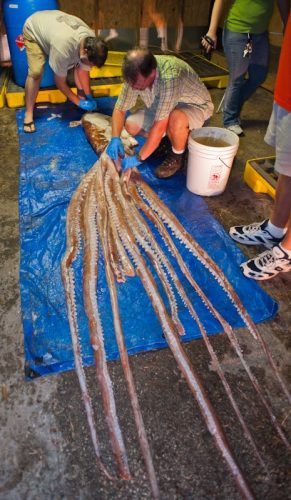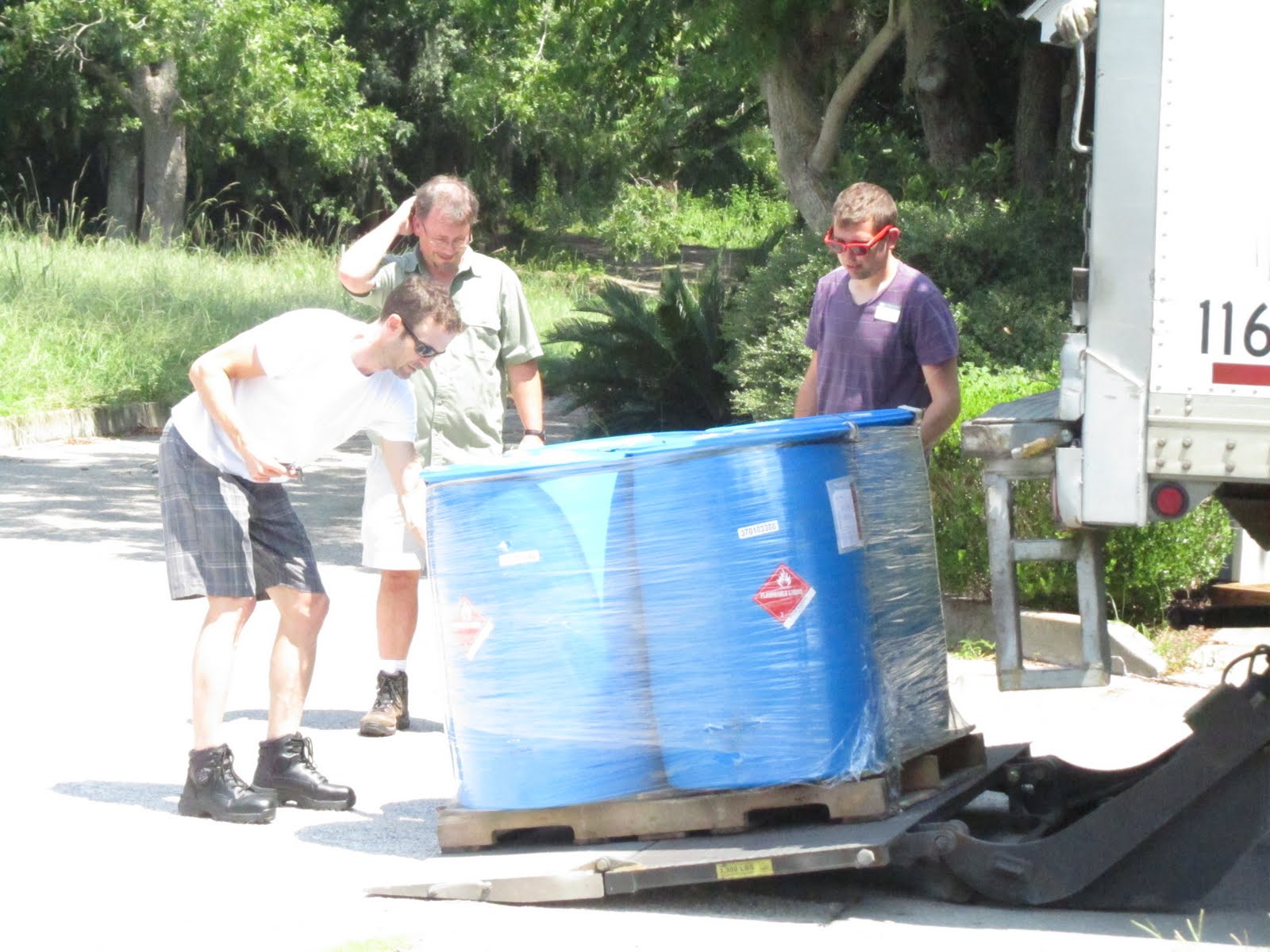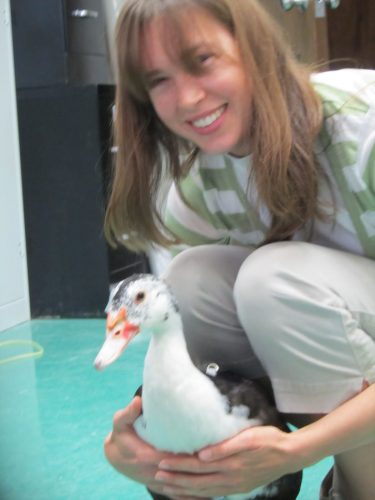It’s been way too long since my last posting, but I have so many good-bye posts piling up (Hsiu, Art, Jenna…did I do one for Machel!?) that I’ve been putting it off. Well, I decided to forgo the good-bye posts for the time being and focus on togetherness. Although this blog is really all about the awesomeness of the Invertebrate Division, the truth is that the whole FLMNH is pretty awesome; here are some of the projects that we’ve shared with other divisions (or they’ve shared with us).
Several months ago a strange creature wandered into the range, and I was brave enough to tackle it, as seen in the photo below.
A quick call upstairs to some of the other ranges confirmed what we suspected, not only was this animal a vertebrate, it turns out it was a bird, more specifically a Muscovy Duck. It’s not known to be especially dangerous (lacking claws, spines, venom, spicules, cuvierian tubules, nematocysts, or any other invertebrate armament), and it was wearing a diaper, so we welcomed him into our range, backbone and all.
Because my tackling-expertise had been demonstrated during the duck event I just mentioned, it’s strange that I wasn’t invited to participate in the project illustrated in the next photo.

The fish range moved several large sharks from their old tanks to shiny new ones. Jenna and John were there to help out and photodocument. Some specimens, like the shark above, are just so large that there isn’t room to properly or safely house them in Dickinson Hall. Some of the larger museum specimens, like complete and mounted skeletons, are on display at Powell Hall (the public face of the FLMNH), and some are kept in the large specimen storage facility in another building on campus. This is a specimen that we have in off-site storage.

This Giant Squid was caught floating on the surface off the coast of Florida. He is definitely a giant squid, but in this case he is also a Giant Squid, a member of the genus Architeuthis. It is the first specimen of this genus that we have at the museum. Because they are a deep water species, and…well…giant, Architeuthis are not often collected. Once we figure out the logistics of safely preserving and housing such a specimen in a public place, we hope that this squid can one day educate visitors while on exhibit at Powell Hall.
So with all these large specimens coming in and moving around, I’m sure you’re wondering how our ethanol supply is holding up. Well, we had to place an order.

We tag-teamed this order with the fish range, so when we got the call from the delivery guy a group of us all rushed out to unload some ethanol. This picture, featuring four 55 gallon drums and a bevy of intrepid ethanol-moving-specialists, represents a quarter of that order (and 3/5 of those working on unloading it).
Some ranges have giant specimens that don’t require ethanol. This giant totem pole was moved to a display location on the stairwell. Because it’s very tall, solid wood, and moving to a somewhat awkward location, a Dickinson-wide call went out to recruit assistance.

A whole herd of us wheeled the totem pole outside on a series of carts, then controlled it down a steep hill and around to the back of the museum where we all lifted it and maneuvered it down the hall and into an upright position. Because I was actually helping, this picture is of the final tweaking of the totem pole into place. Nothing like risking life, limb, and artifacts to bring a group closer together.
I’ll try to get back on a regular posting schedule. With Gustav on sabbatical you’d think that I’d have a lot more time on my hands, but it turns out that he still has email.
🙂 Mandy
